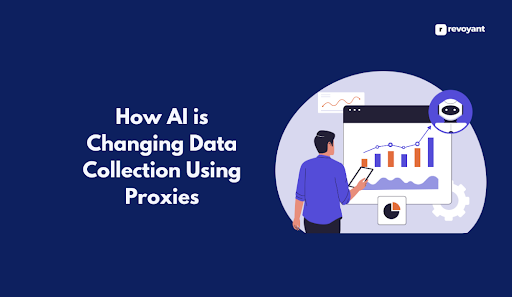Many people worry that robots will take their jobs soon. This is a common concern, and I understand where it comes from. There is so much talk about artificial intelligence and automation these days.
Did you know that by 2025, robots could work as police officers or even sales reps? My blog will explore how these new machines may change careers for everyone and help us see what to expect next.
Keep reading to learn why this future matters for you.
Key Takeaways
- Robots like the PM M01 police robot and Iron sales robot are starting to do jobs in law enforcement and retail. These robots use AI to work better than before. For example, PM M01 can spot people using facial recognition.
- China is leading in robotics and AI, launching many new machines for different jobs like policing, sales, and firefighting. The RTG surveillance robot can move very fast and survive big hits.
- Robots will take on more risky or hard jobs by 2025, changing how work looks for many people. We might need new skills to work with these machines.
- In construction, robots like Zyrex from RRI Robotics can replace whole teams because they can weld, do carpentry, and even print with concrete faster than humans.
- Countries around the world are competing to make smarter robots that blend physical work with digital smarts. This could change how we build things and keep people safe at work.
The Integration of Robots into the Workforce by 2025
Robots are taking on more jobs, changing how we work every day. I see new machines entering offices and shops, helping people finish tasks faster and safer.
Role of robots in law enforcement and sales
Law enforcement robots have started to change police work. Last year, Chinese authorities tested the RTG, a round surveillance robot, for monitoring public spaces. China also launched the PM M01 humanoid police robot, which can patrol and help with law enforcement tasks.
These machines do not get tired; they track activity all day and night using cameras and sensors.
Sales robots are now helping in stores and showrooms. Xpang’s Iron serves shoppers in retail and helps answer questions fast. In 2024, Sherry put AM OGA on showroom floors to greet customers and provide product details.
Sales robots use AI to remember products, show deals, and make shopping easier for everyone who visits.
Next comes more advanced patrol officers and smarter sales assistants with AI features that continue to change how I see jobs at every level.
Advancements in humanoid patrol officers and AI sales reps
Humanoid robots act as patrol officers and sales representatives now, using smart features to do their jobs better. PM M01, a police robot, carries facial recognition technology and answers voice commands quickly.
This means it can spot people in crowds fast or help by giving quick directions. The RTG surveillance robot moves across land or water at 35 kilometers per hour and can endure a 4-ton impact without stopping its patrols.
In retail spaces, Iron uses a powerful AI chip that performs up to 3,000 trillion operations every second, so it handles tasks much quicker than humans do. AM OGA is another machine I find impressive; it speaks ten languages easily and knows exactly where it is down to the centimeter.
These advancements show how artificial intelligence helps humanoid robots join our workforce with new skills each year. I see China leading this progress with rapid tests and rollouts of these smart machines across many industries next.
The Rise of AI and Robotics in China
China stands out, racing fast in the field of robotics and artificial intelligence. I see new machines on city streets, and even more are planned for daily use soon.
Introduction of humanoid police robot PM M01
I saw the humanoid police robot PM M01 making news in artificial intelligence in China. This law enforcement robot stands 1.38 meters tall and weighs only 40 kilograms, looking almost humanlike.
It uses a special design with a waist that turns 320 degrees so it can scan crowds fast at large events or busy public spaces.
Each PM M01 costs $12,000, which is much less than paying for full-time human officers. With advanced robotic technology like this, I see how future of law enforcement may change soon.
The PM M01 shows smart crowd surveillance and investment in robotics moving forward quickly, even reaching areas far beyond just police work.
Testing of spherical surveillance robot RTG
After the debut of the humanoid police robot PM M01, I learned that Chinese authorities moved ahead with testing a new type of surveillance tech. The spherical surveillance robot RTG grabbed my attention right away.
This device does not just roll around quietly; it moves at speeds up to 35 kilometers per hour and survives hits from four-ton vehicles. During tests last year, developers checked both its highspeed mobility and impact resistance.
I find it impressive how this round robot acts on its own using artificial intelligence. Its design helps it resist damage while gathering information for security teams in real time.
As part of China’s push in robotic innovation, the RTG shows big advancements for autonomous movement and advanced surveillance technology within Chinese robotics.
Development of firefighting bots by Deep Robotics
Just like RTG brings new ideas to surveillance, Deep Robotics is changing firefighting with smart machines. I see these autonomous firefighting robots acting as fast, agile scouts.
They are not just simple tools; they climb stairs quickly and can move through tight spots where people cannot go safely.
Each bot uses advanced fire detection technology and intelligent fire sensors. These bots spot flames faster than humans in many cases. By using AI-driven systems, the bots react at once during emergencies.
Rapid response robotics helps lower risks for firefighters and saves more lives and property. Firefighting drone technology supports these robotic scouts so that teams cover large buildings or factories from the air and ground at once.
Deep Robotics keeps pushing boundaries by giving us cutting-edge firefighting solutions we all need today.
Retail and service industry robot Iron by Xpang
Iron from Xpang stands 5 feet 8 inches tall and weighs about 154 pounds. This retail and service industry robot moves with the help of 60 joints, including 22 in its hands, giving it human-like movement.
Iron uses a custom AI chip that handles up to 3,000 trillion operations per second. This makes it quick and smart for automated customer service and store tasks.
I see this robot changing how stores work by bringing advanced robotic systems into daily use. Its strength in artificial intelligence helps automate many jobs people do now in shops or restaurants.
China is pushing these types of robots forward fast, making retail automation more common each year. Next comes news on AM OGA from Sherry, another example of robotics in action across China’s workforce.
Deployment of AM OGA by Chinese automaker Sherry
Chinese automaker Sherry rolled out the AM OGA robot with some amazing features. This advanced machine can speak 10 languages, which helps it handle multilingual communication with ease.
I find its precision impressive; AM OGA moves using centimeter-level accuracy in tight spaces and busy streets. It performs smooth tasks thanks to a library of humanlike movements.
I see how this innovation sets a new standard for the automotive industry and robotics field in China. With AI, language translation, and precision navigation built-in, Sherry pushes forward into autonomous driving and advanced technology.
The mix of machine learning and real-world use makes AM OGA stand out as a symbol of true innovation for smart mobility solutions around the world.
Advancements in Robotics
Robots now handle jobs that once needed whole teams of people, bringing big changes to how things get built. I see this new wave of machines as a strong answer to worker shortages in construction.
The Zyrex robot from RRI Robotics
The Zyrex robot from RRI Robotics stands 20 feet tall, making it one of the biggest machines I have seen in construction technology. This automated construction powerhouse is set for deployment in 2026.
Zyrex handles welding automation, carpentry automation, and even 3D printing with concrete. It can do work that usually takes a whole group of people to finish.
I see Zyrex changing how companies use robotic construction equipment on job sites. With advanced fabrication technology, builders can speed up their projects and solve labor shortages fast.
Industrial robotics like this will push the U.S. Construction Industry forward during its current crisis in 2024. Automated construction by robots such as Zyrex will likely become common soon as more businesses look to boost safety and save money.
Potential to replace entire construction teams
After looking at the Zyrex robot from RRI Robotics, I see how fast things are moving in automated construction technology. This autonomous construction robot works without human help by using LAR and vision language action models.
It scans its surroundings, reads digital blueprints, and makes quick changes on the job.
Costs are lower than many expect, too. For under $1 million to buy or just $20,000 a month to lease, companies could use these self-operating construction devices instead of hiring large teams.
Tools like AI-powered construction equipment and unmanned construction systems now complete tasks such as building walls or lifting heavy items. Automated building machines can handle jobs that once took several people; this helps during labor shortages in places like the U.S. Construction Industry Crisis of 2024.
Robot-assisted construction is not science fiction anymore; it’s happening on real sites right now with smart machines doing much of the hard work alone.
Impact on the U.S. Construction Industry Crisis (2024)
Construction sites in the U.S. faced a major crisis in 2024, with over 1,000 fatal injuries and nearly 500,000 skilled worker shortages. Robots like Zyrex offered new solutions for the construction industry crisis.
I saw how robotic advancements helped reduce workplace injuries and cut down on deadly accidents.
Project efficiency improved because robots handled tough or dangerous tasks quickly. They kept sites safer by taking on jobs that put many workers at risk before. With technology like Zyrex now available, projects stayed on pace even when skilled labor was hard to find.
Robotic advancements became key tools for solving workforce shortages and raising occupational safety standards across American job sites.
Global Race Towards AI and Robotics
I see countries and companies racing fast to create smarter robots. This push for new technology is changing how we work, think, and plan for the future.
Major companies competing in the development of AI-powered machines
Tesla sets big goals in the robotics industry. The company wants to produce 10,000 units of its Optimus robot by the end of this year. This machine uses advanced AI-powered technology and aims to help with both physical labor and digital tasks.
Production targets like these show how fast automated machines are shaping up.
I watch many other companies join the global race too. Xpang has made headlines with Iron, a retail and service robot showing smart features in stores. Sherry, a Chinese automaker, has launched AM OGA for automation on factory floors.
These examples highlight rapid changes worldwide as everyone chases higher manufacturing goals, more efficient artificial intelligence, and smarter robotic innovation each month.
Focus on a convergence of physical labor, digital intelligence, and strategic national development
China leads in this global race, creating AI like the Ascend line, and launching robots in many jobs. I see these smart machines joining hands with people, blending physical labor and digital intelligence.
For example, humanoid patrol officers now walk city streets while AI-powered sales reps help customers online. Robots such as Iron by Xpang work fast in retail stores.
Smart manufacturing grows through automation and machine learning every year. Construction sites use Zyrex from RRI Robotics to replace whole teams of workers. Policymakers push robotics forward for strategic national development; they want safer workplaces and faster progress across industries like law enforcement, firefighting, and car manufacturing.
This blend of human skill with advanced technology is changing how countries shape their future workforce and economy.
The Future of Work and Human Roles
Robots will change how we work, and many jobs may look very different soon. I see people working with machines more often, while new types of roles could appear as technology grows fast.
Discussion on the impact of robots replacing human roles in the workforce
I see robots quickly taking over human jobs. By 2025, experts say machines will replace many roles in the workforce. I notice this trend everywhere, from factories to new tech companies.
The U.S. construction industry already faces a shortage of almost 500,000 skilled workers and more than 1,000 fatal injuries each year. Companies like Xyrex now use robotics to fill these gaps and keep people safer on job sites.
Job automation brings both benefits and worries for workers like me. Machines handle risky or hard labor better than humans do; they never tire or get hurt as easily. This shift creates an economic impact since some people lose work while others need new skills to manage robots or fix them when things break down.
As automation grows fast, the skill gap becomes clear because not everyone can switch careers so quickly or learn high-tech tasks overnight. Robots may solve labor shortages but also make us rethink what our future work looks like in America and beyond.
Conclusion
Robots are changing jobs fast, and I see this happening all around me. Factories, offices, and even streets use machines to save time and money. Many workers may need new skills to keep up with these smart tools.
This shift brings fresh chances for careers but also big challenges for people who work today. I stay curious about how robots will shape my world by 2025.
FAQs
1. What is the AI revolution in terms of transforming the workforce?
The AI revolution refers to how advancements in artificial intelligence and robotics will significantly transform our workforce by 2025, leading to changes in job roles, skills requirements, and work processes.
2. How will robots change the workforce by 2025?
Robots are expected to automate many routine tasks currently performed by humans. This means some jobs may become obsolete but also that new opportunities will arise where human creativity and problem-solving capabilities are needed.
3. Are all industries going to be affected by this transformation?
Yes, all industries are likely to experience some level of impact from the AI revolution. However, those with a high degree of repetitive or predictable tasks may see more significant changes sooner.
4. Will there still be jobs for people when robots take over much of the work?
While it’s true that robots will take over certain tasks, they can’t replace human creativity or decision-making abilities entirely. Therefore, while some job roles might change or disappear altogether, new ones that we can’t even imagine today could emerge as part of this transformation.




